Top 5 Engagement Ring Blunders & How to Avoid Them
Your engagement ring is more than just a pretty rock mounted on a precious metal band. It symbolizes the unity between your and your fiancé and all the history you’ve shared. It’s also a tangible reminder of the future you’ll share together.
However, wedding and engagement rings are shrouded in any number of myths that have resulted in fairytale expectations. And honestly, these fantasy conditions do not have to be met in order to have the perfect ring, let alone the perfect marriage. So let’s get practical. Here are 5 most common misconceptions people have about engagement rings and also some ways to find the meaning behind all the madness so you can have a beautiful ring and a beautiful life with your new husband.
Myth #1. The Proposal Ring must be Perfect
The classic image of a man on bended knee holding out a solitaire diamond in a beautiful box is still with us. However, mainstream media has driven what precedes that presentation to an all-time high. These days you’ll see prospective grooms going over the top and taking days, months or even years in order to plan a proposal that’s worthy of going viral on YouTube. And of course, his efforts are rewarded with his beautiful fiancée swept off her feet with the extravagance of it all.
He also must take weeks or months to find the perfect ring, the one she “wouldn’t trade for anything in the world.” The problem is, though, no matter how well he thinks he knows you, unless your man buys you the exact ring you pointed to in the jeweler’s window, you might not be that thrilled. So what’s the solution?
It’s easy! Just choose from one of these 3 basic alternative proposal scenarios:
- Window shop ahead of time: If he doesn’t mind that the proposal won’t be a complete surprise, he can take you window shopping and pay close attention to your comments.
- Accept a solitaire & shop later: He can get you a simple solitaire and then take you shopping for the setting you really want.
- Get engaged without a ring: He can propose without a ring, and the two of you can have one heck of a romantic adventure shopping together.
But what do you do if he totally misses the mark in Option #1 and you absolutely loathe the ring he bought? This can be tricky because your disappointment will show on your face. Our best advice here is to be sincere and accept the proposal—after all, you love this guy, right?—then use your feminine wiles to hint that you’d like something a little bit different
Myth #2. One Large Clear Diamond is Superior
As with many other misconceptions, when it comes to diamonds, the myth that “bigger is better” is not always the case. There are, in fact, several factors that make up a diamond’s value.
The GIA (Gemological Institute of America) lists 4 Cs for diamonds. These refer to color, clarity, cut, and carat weight. Here’s a little primer on just what those terms mean:
- Color: This universally accepted diamond rating system puts emphasis on the lack of color as the mark of a better stone. As the GIA put it, the best diamonds are “chemically pure and structurally perfect” and are “like a drop of pure water.”
- Clarity: Internal and external imperfections are to be expected of diamonds. No stone is 100% perfect. But those that do get as close as it can get carry the highest value.
- Cut: This does not refer to shape as in round, heart, oval or pear. The diamond’s cut refers to the stone’s interaction with light. Proportions and symmetry are the artistry of a well-cut diamond.
- Carat weight: One metric carat is equal to 200 milligrams. Combined with the above criteria—color, clarity and cut—a stone with the exact same weight as another can have wildly different values, either for better or for worse.
The ultimate goal is to find the best diamond that fits your budget (or as close to it) and also suits your personal taste. There’s also a rapidly growing trend toward colored stones in engagement jewelry. In fact, it would seem that pink diamonds are not only retaining their value, but they appear to be on the rise. Other colored gemstones can make beautiful rings, too, so keep an open mind especially if price and creativity are important to you.
Myth #3. You Must Buy the Best Up Front
One of the most persistent myths is that an engagement ring’s worth must be equal to 3 months alary. That means if your fiancé makes, let’s say, $60,000 per year, he should spend $15,000 (based on $5,000 per month x 3 months) just on your ring. That’s more than a lot of couples spend on their entire wedding!
Now it is a fact that precious metals and diamonds, and even good quality semi-precious stones, don’t come cheap. And there’s always the option of saving up for the right ring and then paying cash.
However, a very practical approach would be to settle on a modest engagement ring—or perhapsa simple band for the wedding itself—with the intent of upgrading somewhere down the road. There’s also no rule governing how rings should be paid for and who has to shoulder the cost. It is worth noting, though, that just as in the United States, many other cultures expect the man take the initiative in these matters.
Here’s an interesting notion that’s gaining popularity: Stack rings. Apply that principle to engagement and wedding rings and buy one modest ring for each anniversary and then “stack them.” This takes otherwise too-modest looking rings and puts them together to make a real statement.
Note: This is also extremely practical because you can have one simple gold band to wear “all the time” as a sentimental thing. This simple band can stay on while doing dishes, working in the garden, or worn to work if you’re in a field where you can’t have rings that stick up or scratch. Then stack your fancier rings on top when you go out or even just at home. And with a group of stacked rings you can even mix ’n match gold tones—yellow, white, rose gold, even black!
Here’s a link to nineteen different stacked wedding rings: http://www.womangettingmarried.com/19-stacked-wedding-rings/
Myth #4. Only Round and Only Clear is Acceptable
The traditional way to go is the round diamond that’s perfectly symmetrical and has the most brilliant fire. However, there are plenty of other options. There’s princess, oval, marquise, pear, cushion, emerald, radiant, heart shape, and the latest craze, the vintage look of an Asscher cut.
Another idea to maximize your engagement ring dollar is to use a colored stone as the centerpiece and surround it with many other smaller stones. An Asscher cut engagement ring with a center stone and surrounding colored stones is particularly stunning.
Myth #5. Customized is Costly
One option that many younger couples should definitely entertain is the possibility of custom made jewelry. Established shops might have impressive collections, but if what they offer is not what you are looking for then perhaps it is best to have a ring made exactly to your liking.
The freedom to play around with materials, colors, cuts and everything else make custom made jewelry an attractive option. For one, you won’t have a cookie cutter ring that, while quite lovely, could also look quite common.
One of the simplest ideas is to have a custom guard made for the solitaire he chose and presented to you when he proposed. You’ll also find that standard jewelers are carrying more innovative and interesting looking pieces like black gold with either black, clear or colored stones. Cluster rings are another recent idea that’s all the rage.
Custom made jewelry isn’t necessarily cheaper but using other materials for the ring—or rings—could significantly cut costs.
Final Note: You Make the Decision, Not Your Jeweler
Gone are the days when jewelers had the final say on what engagement ring you should wear. But no matter what ring you finally agree on, it’s important always to remember that your engagement ring is the physical representation of your love and determination to work things out together. Giving it thought and not simply shelling out a small fortune in order to “follow the engagement ring rules” is definitely something you should consider.
Even if you do go the more traditional route, we hope that busting these myths will have freed you up at least just a little bit—and if nothing else, we’ll have kept a few more dollars in your wallet!

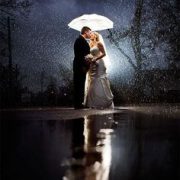

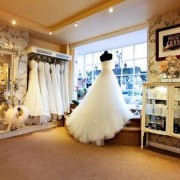
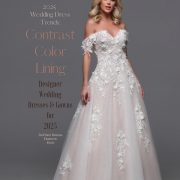
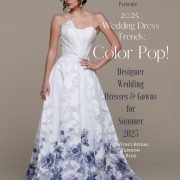
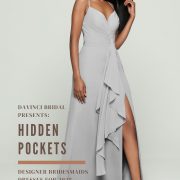



Recent Comments